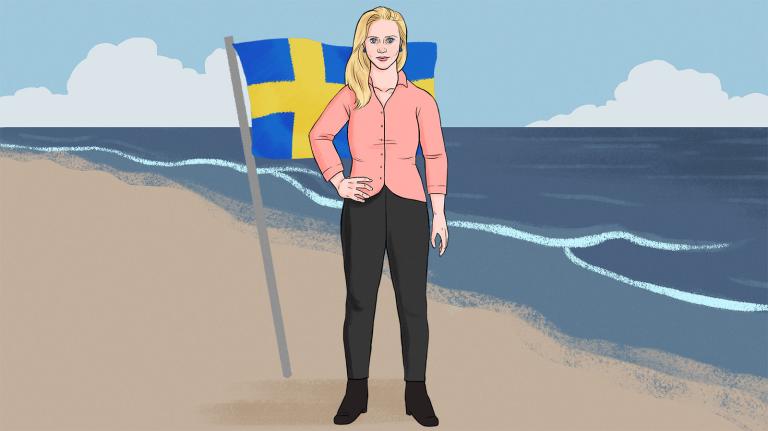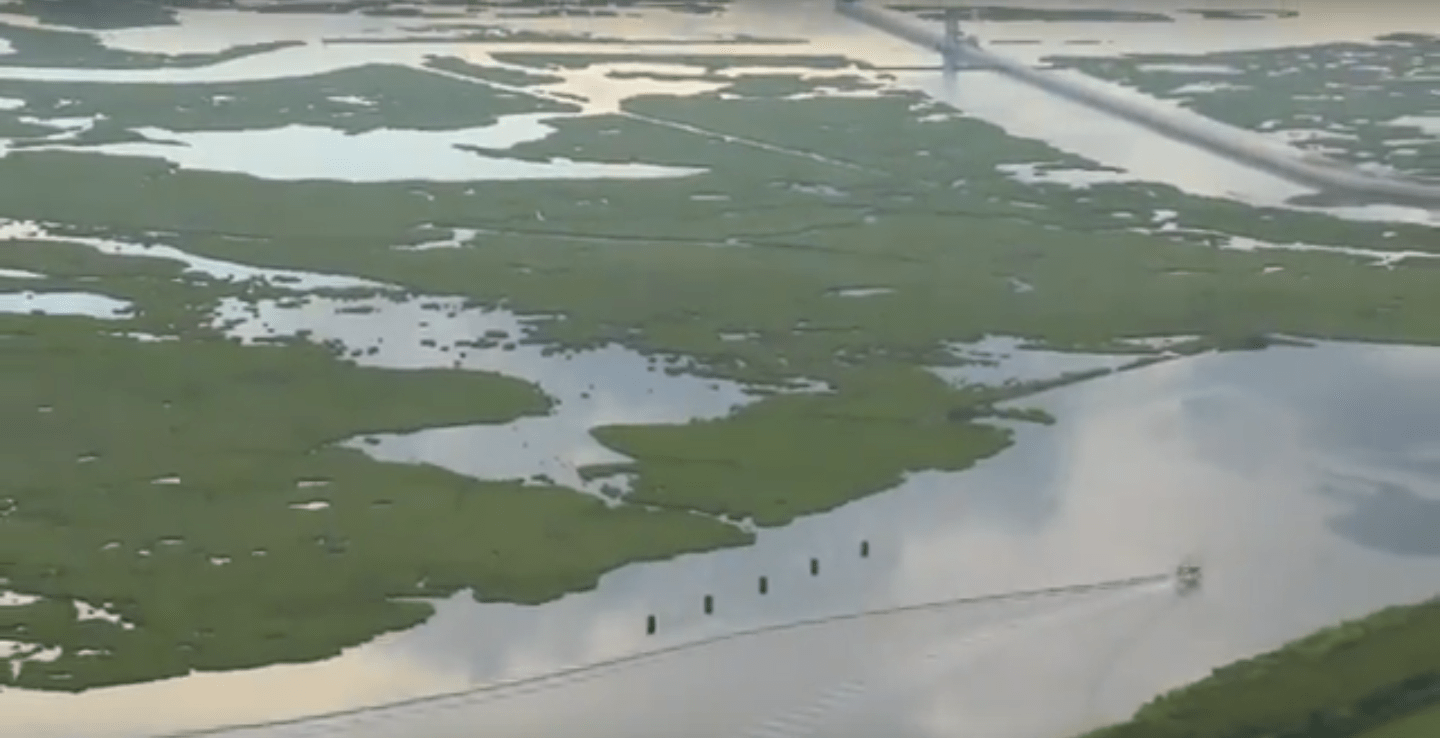This story is reproduced here as part of the Climate Desk collaboration.
I’m driving down a dirt road in the vast tangle of coastal bayous that stretch south of New Orleans, so that Reggie Dupre can show me his pride and joy.
“This is the little silver lining on the very dark cloud that was over Louisiana,” he says.
In front of us, construction crews are shaping mounds of rock and dirt into a mile-long, 12-foot levee. On one side is a canal, crammed with boat traffic for the offshore oil drilling industry. On the other side is Terrabonne Parish, a rural community of commercial shrimp fishermen and oil roughnecks who rely on these waterways the same way a city kid like me relies on the subway. The levee dead-ends into a shiny new $25 million floodgate, the last line of defense against storm surges that accompany the hurricanes that frequently slam this coastline.
Dupre is the director of the Terrabonne Levee and Conservation District, a county agency tasked with keeping the homes here above water. A decade ago—when Hurricane Katrina forced 1.5 million evacuations, killed nearly 2,000 people, and caused $100 billion in damage—Dupre was the parish’s representative in the Louisiana legislature in Baton Rouge. After the storm, he became a key architect of the state’s overhauled flood-control agenda, pushing through legislation to create a new state agency to manage coastal issues and working to steer tax revenue from oil drilling into coastal protection projects. Now he’s back home, overseeing projects like the one in front of us. Since Katrina, his office has built 35 miles of new levees.
But the levees are just a small piece of the unprecedented transformation taking place along Louisiana’s coast. Dupre is also an evangelist for a new, broader ethos that has washed over the whole state since Katrina. Experts here agree that levees and floodwalls like this are only effective if they’re buttressed by natural barriers further out in the delta: The barrier islands and marshlands that are rapidly disappearing thanks to erosion, land subsidence, and sea level rise. Because of those forces—driven in part by a century-old practice of sealing the Mississippi River in its course and thereby starving the adjacent wetlands of nutrients and fresh water—Louisiana loses coastal land area equal to the size of a football field every hour.
Before the storm, hurricane protection and coastal restoration were treated as separate, or ever competing, interests. Now, they’re one and the same.
“Without Katrina, this wouldn’t be happening,” Dupre says. “We’ve gone from being the laughingstock to the model for the rest of the country.”
In 2012, officials in the state’s new Coastal Protection and Restoration Authority—Dupre’s brainchild—released their most recent 50-year, $50 billion “master plan,” a sweeping document that encompasses everything from wetland restoration to elevating at-risk houses. Already, according to CPRA chair Chip Kline, the state has reconstructed 45 miles of barrier islands and restored nearly 30,000 acres of wetlands. These natural barriers slow storm surge before it reaches the levees, the first in what are known here as “multiple lines of defense.”
There are also 250 miles of new levees, a two-mile storm surge barrier wall, the world’s largest pumping station (it can drain an Olympic-sized swimming pool in less than five seconds), and a host of other projects designed to control floods and stymie land loss. Kline says he’s confident that New Orleans is now safe from at least a 100-year flood (that is, a flood so severe that it has only has a 1-in-100 chance of occurring in any given year). Katrina was a 150-year flood in New Orleans. But given the realities of climate change, most experts think the city won’t be truly secure until it reaches the 500-year level.
President Barack Obama agrees: Earlier this year he signed an executive order stipulating that any flood protection measures supported by federal money must meet a 500-year standard. Louisianans like Kline and Dupre contend that that standard is unreasonable and could hamper vital projects that are too expensive for the state to roll out on its own.
Either way, the Louisiana coast is now a massive laboratory for the kinds of measures that coastal cities like New York and Miami will need to survive climate change. For Dupre, the stakes are clear: “If I’m not successful, my whole culture disappears.”
There’s no better way to see the coast’s plight, and the scramble to save it, than from a bird’s-eye view. So Climate Desk hopped aboard a pontoon plane for an exclusive flyover. Check out the video above.




